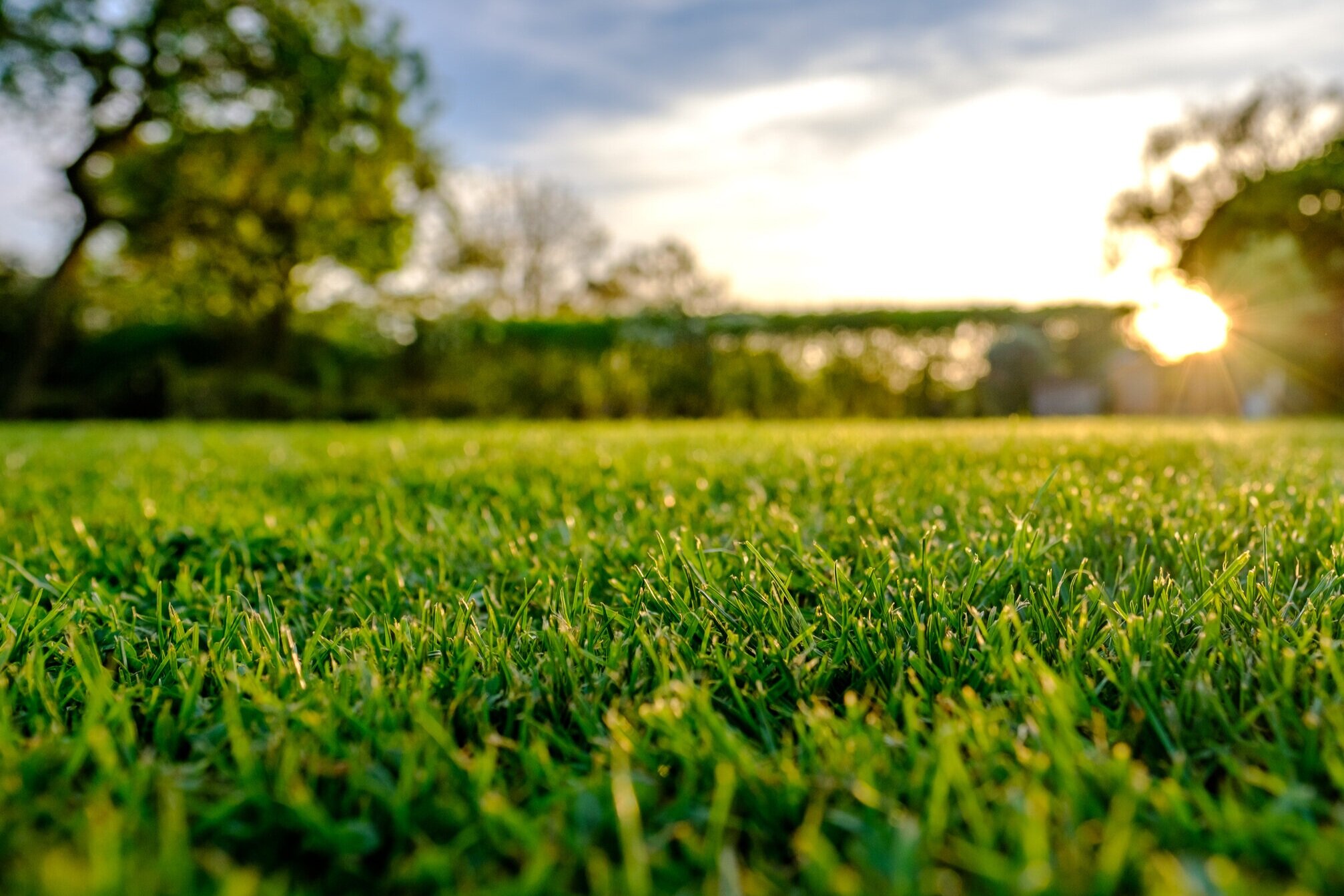
Fungi occur naturally in turfgrass, helping to break down and degrade thatch, keeping your turf healthy. But when this delicate balance of microorganisms is thrown off, or your turf experiences stress and strain, the disease becomes a major threat. At the same time, different weather conditions also support and bolster disease, and when stressed turf is exposed to poor weather it becomes a breeding ground for disease.
Some turf diseases grow in the winter months, while some thrive in the summer and others in the spring. Regardless of the type, turf diseases are no joke.
Turfgrass diseases are often left unnoticed because the plant pathogens causing the problems are rarely observed and often are mistaken for other disorders or injuries. Use of appropriate maintenance practices (i.e., mowing, water, and fertility) in your golf course will reduce the risk of turfgrasses facing diseases or severe damages by turfgrass pathogens.
What Turfgrass Diseases Threaten Golf Courses?
Turf diseases present in a variety of ways and can be easily confused or misidentified. Worse still, with each disease requiring specific treatment, it’s especially important to correctly identify and execute disease management.
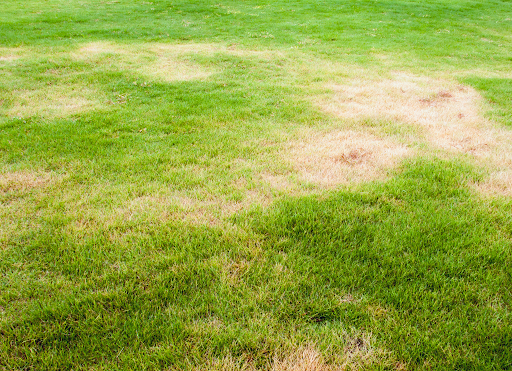
1. Brown Patch
Brown Patch highly favors humidity, excessive soil moisture, high nitrogen levels, and extended wet weather. When the turf leaf begins to reflect blighted circular patches, a few inches to foot apart, that is a symptom of a brown patch.
This disease affects both cool-season and warm-season turfgrass species. So, turf grasses such as St. Augustine grass, Bentgrass, and tall fescue are at risk.

2. Dollar Spot
Dollar Spot favors dry soil, low nitrogen levels, and cooler weather. Dollar Spot is so named for its silver dollar sized patches which form only inches apart from each other. In severe cases, these spots may begin to grow white mold which further weakens turf to disease.
Tall fescues, perennial ryegrass, Kentucky bluegrass, Bentgrass, Zoysiagrass, centipede, and bermudagrass hybrids are particularly susceptible.
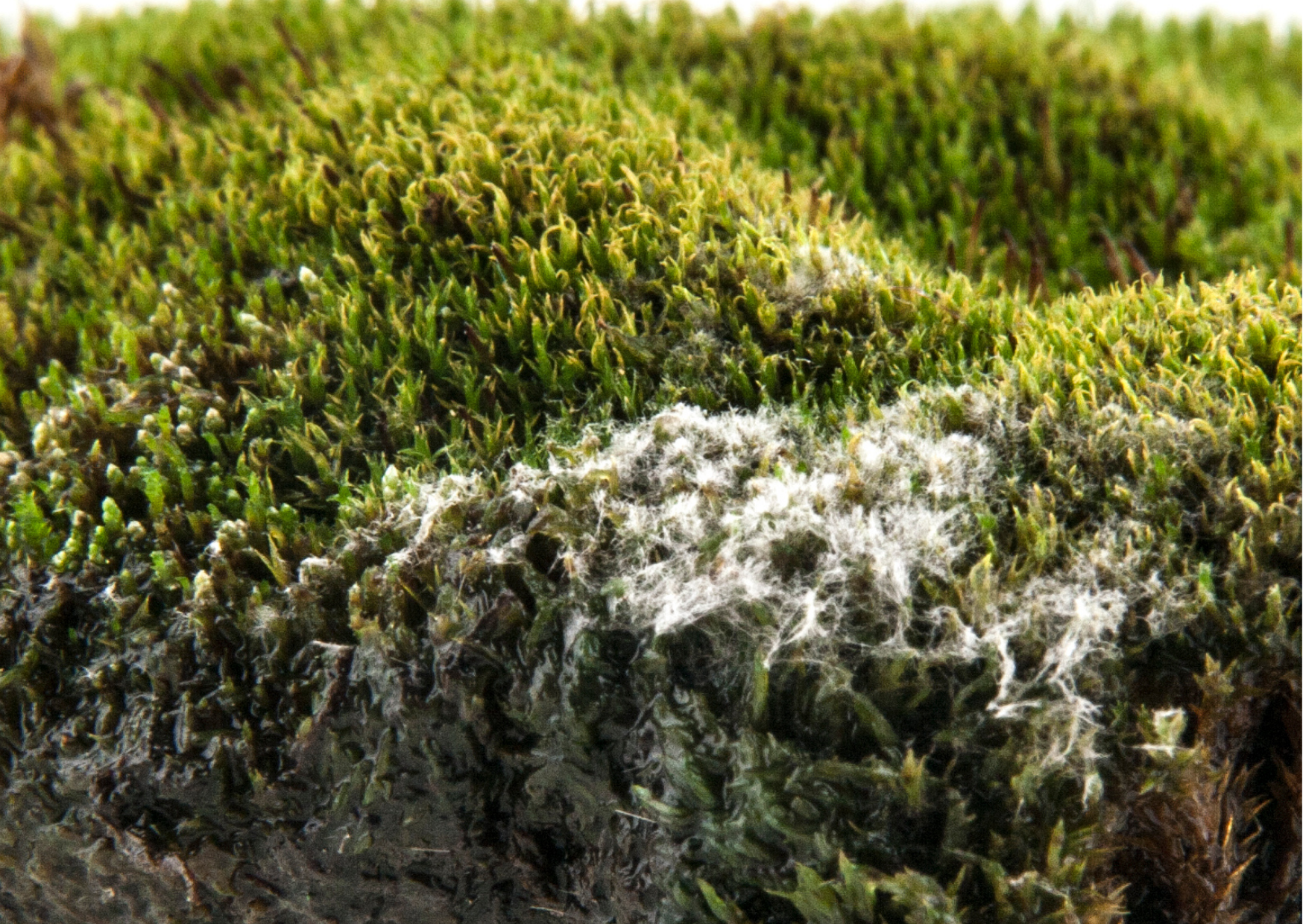
3. Pythium Blight
Pythium Blight or simply Blight is one of the more feared diseases in the turfgrass community. Over irrigation that leads to excess moisture or heavy rain showers is the cause of Pythium disease. In its early stages, it appears in irregular, small spots that may enlarge over time. It also looks water-soaked and dark. The affected area dies slowly, collapse eventually, and appears oily. In the worst cases, Blight may progress far enough to require turf reinstallation on the golf course.Annual bluegrass and varieties of Bentgrass, tall fescue, perennial ryegrass, bermudagrass, Zoysiagrass, and St. Augustine grass are all susceptible to Pythium disease.
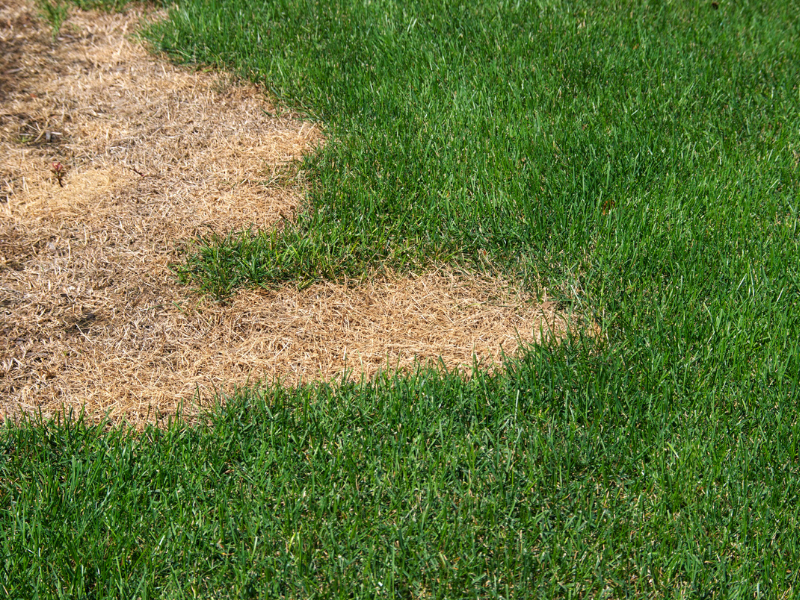
4. Summer Patch
As you may have guessed, Summer Patch is a fungus that appears in the warm, wet conditions of summer. Warm-season grasses like Kentucky Bluegrass are especially susceptible to these slow-growing fungi which thrive in periods of heavy rainfall. Summer Patch appears as wilted patches of tan or brownish circles, which some refer to as “frog-eyes” due to its distinctive pattern.
Summer Patch is caused by the agent Magnaporthe poae. This disease is susceptible to Kentucky bluegrass, Annual bluegrass, and fine-leaf fescue.
Summer patches are seen as uneven or circular shaped patches that measure from a few inches to a few feet in width. At first, patches are seen as slow-growing, wilted or thinned turfgrass. Mature patches appear as yellow to straw-colored and may unite as they grow in size.
Foliage of the infected plant changes yellow to brown all over. The roots turn medium to dark brown. Summer patch can show a ring-like appearance where a barely susceptible grass species thrives inside the infected patch.
Summer patch happens when the roots become infected at soil temperatures exceeding 65°F; though, foliar symptoms are visible at temperatures above 85°F during the day and above 70°F at night. Also, it is often found in locations that are exposed, sunny and with high soil pH and moisture, compaction, low mowing height and poor drainage. This disease is usually severe to a greater extent in turfgrass that has been fertilized with nitrate-nitrogen.
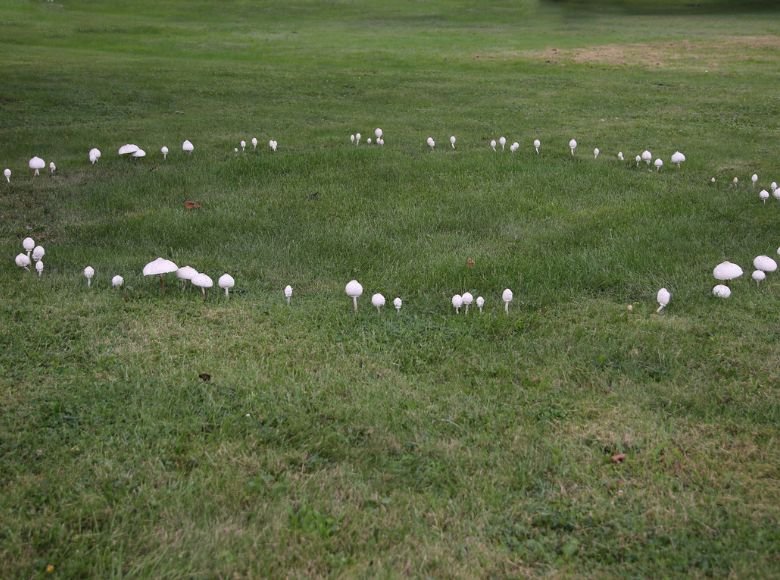
5. Fairy Ring
Fairy Rings typically thrive in sandy soils such as those on golf course fairways and tees. Fairy Ring is a species of fungi that form rings or arcs of dead grass or mushrooms. These rings are variable in size and are sometimes more than 100 feet in diameter.
Fairy ring fungi live and survive by spores or other means in dead organic matter in the soil or thatch. Fairy Rings can be a threat to undermaintained or abandoned golf courses.
Fairy Ring can be caused by the agent Basidiomycetes of more than 50 species on native soils. It is susceptible to all species of warm-season and cool-season turfgrass. Fairy ring symptoms differ according to causal agents and the environment. Puff ball basidiocarps and above-ground mushroom may or may not occur. Usually, turf symptoms are seen as outer rings that are either brown or dark green in color. At times the symptoms show circular areas or hydrophobic rings showing the beginning of wilt. The size and shape of the rings differ being dependent on the environmental conditions and species.
Movement in the turf can ease up when the individual rings encounter each other. A few agents turn into fruiting bodies (i.e., mushrooms), not rings. On the other hand, other causal agents may form discolored rings, not fruiting bodies. The fungi that cause a fairy ring symptom may be limited to the thatch area or soil or both. An orange discoloration may be observed along the root zone with or without a strong mushroom odor.
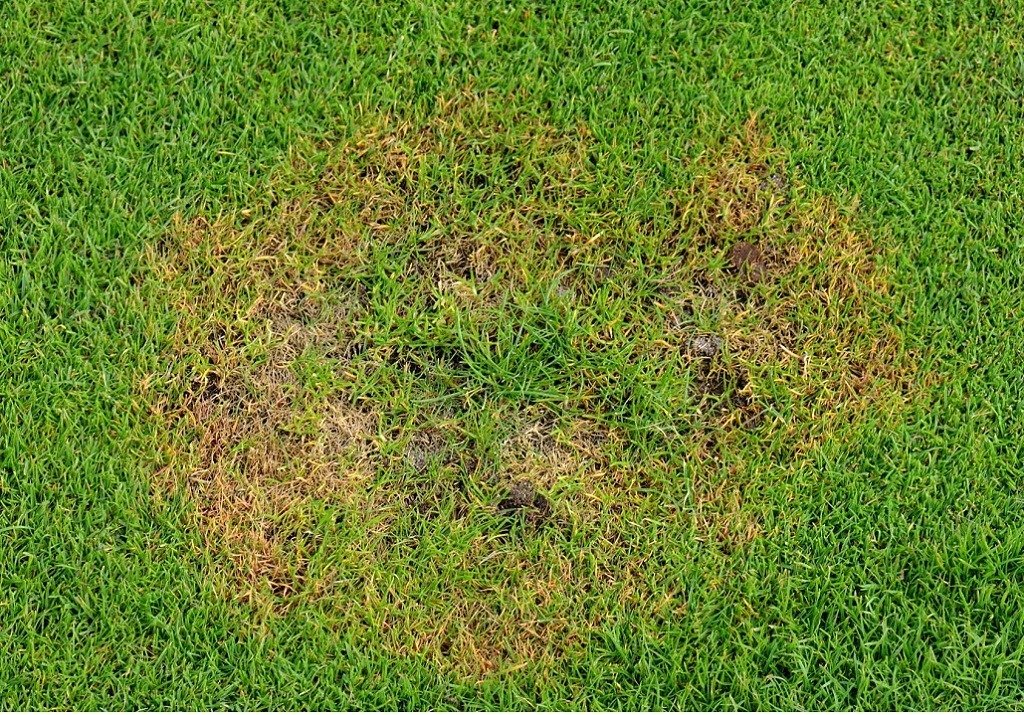
6. Ectotrophic Root Infecting Fungi (Take-all Patch)
Take-all Patch is caused by the agent Gaeumannomyces graminis var. avenae. It is susceptible to Bentgrass. Take-all patch is observed initially as reddish-brown, small, circular spot patches. Symptoms advance to brown or bronze-colored, wilted, circular patches that measure up to a few feet in diameter. Symptoms are most visible at the time of stress caused by hot, dry weather. Diseased plants show dark-brown roots.
Take-all patch is often found on newly established turf and severity reduces as the turf matures. It happens in areas that contain light textured soils, manganese deficiency, low organic matter content, and pH above 6.5. Take-all patch often occurs in wet, cool conditions and in regions with a high soil pH, most severe at pH 6.5 or above. This disease is greatly severe on sandy and less fertile soil.
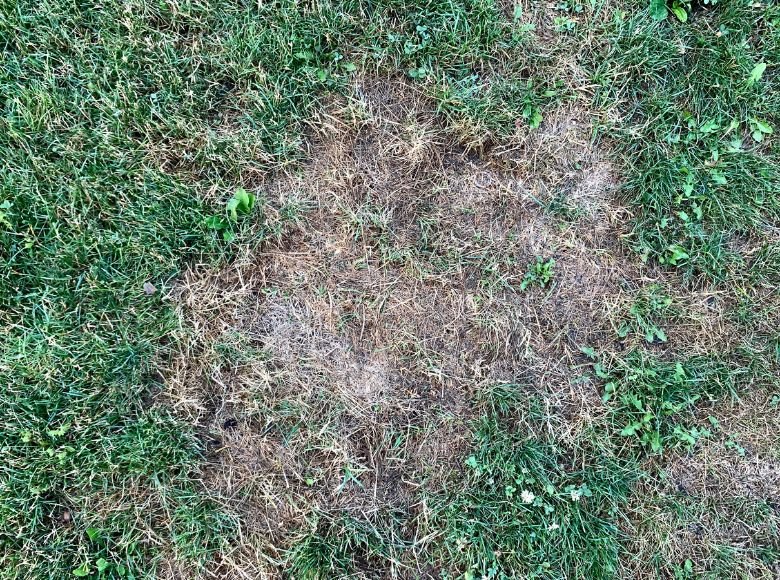
7. Spring Dead Spot
Spring Dead Spot is caused by the agents Ophiosphaerella korrae, Ophiosphaerella herpotricha, and Ophiosphaerella narmari. It is susceptible to Bermudagrass and buffalograss. Affected bermudagrass shows disease symptoms as it comes out from winter dormancy. Spring dead spots look like straw-colored, bleached, circular patches that measure up to some feet in diameter. The roots of infected plants turn dark brown to black.
Spring dead spot favors wet, cool weather in the spring and fall and daily temperatures below 60°F in November. This disease basically occurs where thatch is above 1/2-inch thick and in regions with low potash levels and poor drainage. Excess applications of nitrogen in late summer often increases the severity of the disease in the following spring. Spring dead spot is severe on bermudagrass to a greater extent that is more than three years old and in regions with cold temperatures and long dormancy.
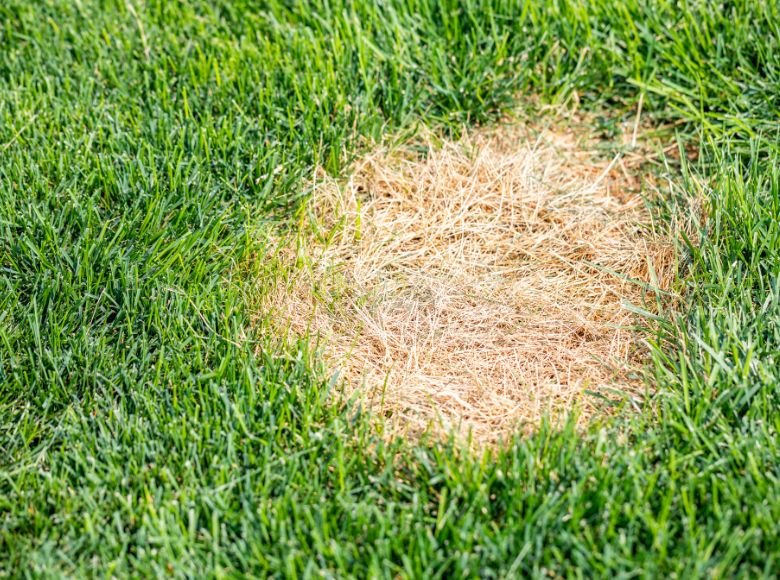
8. Necrotic Ring Spot
Necrotic Ring Spot is caused by the agent Ophiosphaerella korrae. The susceptible turfgrasses include: Kentucky bluegrass, annual bluegrass, rough bluegrass, fine-leaf fescue. Necrotic ring spot starts as small, light green spots and develops to circular, thinned, patches that are yellow to light-green in color and spreads up to 3 to 15 inches in diameter.
The patches gradually turn straw-colored or brown and die. The rhizomes and roots of the diseased turfgrass turn brown to black. Grass plants can survive and gather at the center of the patches, which results in a ring-like appearance.
Conditions favorable for Necrotic ring spot to appear is moist soil, flourishes in temperatures of up to 80°F and grows severely in higher temperatures and drought conditions. Sodded and seeded sites are susceptible to this disease in newly cleared woodlands. This disease is also observed in areas with compacted soil and that consist of high amounts of nitrogen during the spring and summer.
Turfgrass Disease Control
A majority of turf diseases respond to the below treatment, but treatment will vary by turf type, disease, and a variety of factors. If you aren’t confident identifying turf disease, consult a golf course maintenance professional or a certified turfgrass professional. Correct disease identification is always the first step to addressing the problem.
Adjust mowing routine.
Aerate and dethatch your soil.
Clean and disinfect all maintenance tools and equipment to prevent spreading disease.
Conduct soil tests and address nitrogen levels.
Utilize an antifungal or pesticide.
Turfgrass Disease Prevention
The best way to control turfgrass disease is to prevent it entirely. Addressing any abnormality as soon as you notice is one of the major keys to preventing disease, but the following steps also help.
Adjust your watering with the weather.
Conduct regular soil tests.
Aerate more than once a year.
Install turfgrass that is native to your region
With golf courses relying on their turfgrass for business, disease prevention should be a priority in every golf maintenance routine. DTE Golf® provides golf courses with our Active Support Network, providing access to heavy machinery, accounting, and payroll services, and taking on liability with insurance and workers compensations. Find out what makes DTE Golf® different.
